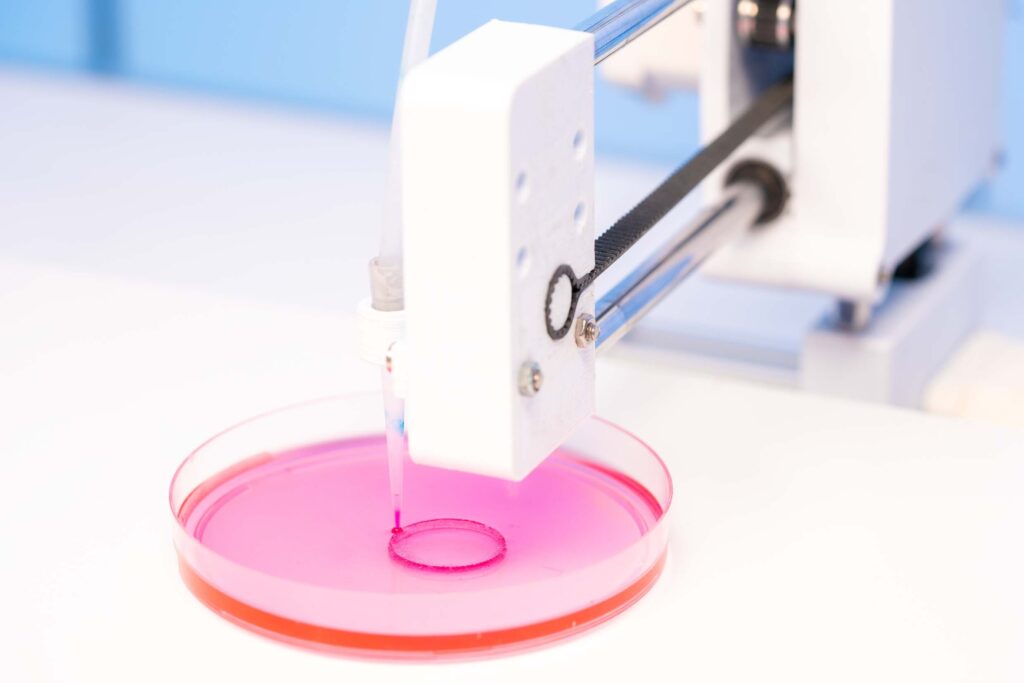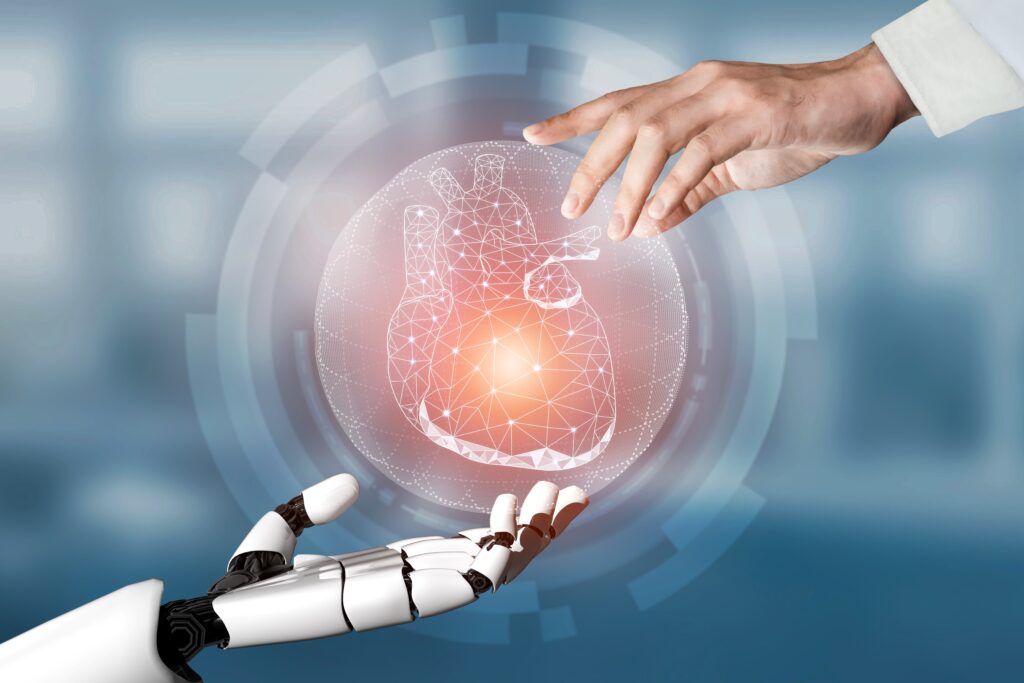
Evolving Biomaterials: The Role of AI in Revolutionizing Medical Science
Artificial intelligence (AI) is changing the landscape of biomaterials research. With its ability to process large datasets and automate complex tasks, AI is accelerating the pace of biomaterials discovery, leading to groundbreaking advancements in medical science.
In the ever-evolving field of biomaterials, artificial intelligence (AI) is playing a pivotal role in driving innovation. From
simplifying data analysis to automating experiments, AI is revolutionizing how researchers discover and develop new biomaterials. This article explores the journey of biomaterials, highlighting key milestones, the integration of AI, and the future prospects in this field.
Biomaterials, substances used in medical applications, have evolved significantly over the years. Initially, biomaterials were primarily
metals and ceramics designed to be biologically inert. However, advancements in technology have led to more sophisticated biomaterials with enhanced functionalities. The introduction of artificial intelligence into this field has further accelerated progress, allowing researchers to analyse large datasets and automate tasks that once had to be done manually in a highly time-consuming
manner.
Historical Overview
Biomaterials have played an integral role in medical applications, dating back to ancient civilizations where they were initially
used for rudimentary medical applications such as prosthetics and dental work. This early adoption underscores a longstanding interest in developing materials that could function effectively within the human body.
The formal study and use of biomaterials commenced in the early 20th century, primarily utilizing metals like gold, platinum, and
stainless steel in dental applications and simple implants. These materials were chosen based on their durability and inert properties, although their biocompatibility was not ideal. As the field progressed in the mid-20th century, a significant transformation occurred with the introduction of polymers. Materials such as polyethylene and silicone revolutionized biomaterials by facilitating the development of complex devices like heart valves and joint replacements. These polymers offered improved integration with
biological tissues due to their flexibility and benign interaction with bodily processes.
By the 1980s, advancements in ceramics and composites marked another significant milestone. Researchers began using these materials for their superior strength and biocompatibility, expanding applications into
bone grafts and reconstructive surgery with materials like hydroxyapatite and alumina. These developments further enhanced the capabilities of biomaterials to replace or restore function effectively.
In the late 20th and early 21st centuries, the integration of cutting-edge technologies such as nanotechnology and bioactive
materials aimed to enhance healing and tissue integration. Notable advancements include drug-eluting stents and innovative bone scaffolding systems. Additionally, the advent of 3D printing technology, particularly from the mid-2000s onward, transformed the field by enabling the creation of patient-specific implants and complex geometries that were previously unattainable with traditional manufacturing techniques.
More recently, artificial intelligence has begun to play a crucial role in biomaterials research. AI’s ability to analyse vast datasets
has been pivotal in predicting material behaviour and optimizing compositions for specific medical applications. Advanced algorithms and machine learning models now facilitate the design of new biomaterials that can actively interact with biological environments to promote healing or effectively deliver drugs.
Looking ahead, the future of biomaterials is geared towards the development of ‘smart’ biomaterials capable of responding dynamically to physiological changes. Innovations on the horizon include biosensors embedded in implants and programmable drug delivery systems, poised to revolutionize how medical treatments are administered and monitored.

Recent Developments
The rise of AI has led to significant advancements in biomaterials research. AI algorithms can process large volumes of data,
allowing researchers to identify patterns and correlations that would be impossible for humans to detect. This capability has been instrumental in the development of high-throughput screening platforms, where libraries of biomaterials can be screened for specific properties.
AI-driven platforms are also being used to automate experimental workflows. The concept of “robot-scientists” is gaining
traction, where robots equipped with AI can conduct experiments, analyse data, and even design new experiments based on the results. These advancements have the potential to significantly reduce the time and resources required for biomaterials research, leading to faster discoveries and innovations.
One notable example of AI in biomaterials research is the development of “Toby,” an automated system designed to discover new biomaterials. The development of “Toby” exemplifies a significant advancement in the field of biomaterials driven by artificial intelligence. Toby, an automated system, has been designed to streamline the process of biomaterials discovery by performing a variety of tasks autonomously, from analysing scientific literature to conducting experiments and interpreting results. This high level of automation allows researchers to focus on more complex tasks, such as designing new experiments and exploring innovative applications. Toby represents the integration of AI, robotics, and material science, showcasing how these technologies can accelerate the pace of discovery in biomaterial research.

Challenges and Opportunities
Integrating AI into existing biomaterial research frameworks presents a significant challenge. These systems must enhance rather
than disrupt current practices, ensuring compatibility and interoperability. Accuracy and reliability are paramount in AI systems, as the outcomes directly influence human health. Moreover, the ethical and security concerns that accompany AI, such as autonomy in decision-making and data security, require robust measures to protect sensitive data and address potential job displacement. Regulatory hurdles also pose a considerable challenge; as AI technologies advance, regulatory bodies must evolve to provide clear guidelines and timely approvals for AI-integrated devices and materials. Additionally, there is a crucial need for training and adaptation for researchers to effectively utilize AI tools, necessitating a deep understanding of AI capabilities and limitations.
Despite these challenges, the opportunities AI introduces to biomaterials research are groundbreaking. AI can significantly enhance the discovery and innovation process by analysing large datasets with speed and precision, uncovering novel biomaterials and understanding complex interactions at an unprecedented scale. This capability is especially beneficial in advancing personalized medicine, as AI can design biomaterials optimized for individual patient profiles, leading to improved outcomes and minimized side effects. Furthermore, AI’s ability to automate repetitive tasks frees up researchers to focus on more creative and impactful aspects of biomaterial development. Predictive modelling and simulations provided by AI are invaluable for forecasting how biomaterials perform under various conditions, allowing for pre-emptive improvements and innovations. Lastly, AI facilitates a multidisciplinary approach by integrating diverse fields such as genomics, nanotechnology, and bioengineering, which is crucial for developing next-generation biomaterials that are smart, adaptive, and highly functional.
Conclusion
The integration of AI into biomaterials research is setting the stage for a series of groundbreaking advancements that could redefine the field. As technology continues to evolve, the potential for AI to lead the way in discovering innovative solutions in healthcare is immense. The vision for the future is clear: smarter, more responsive biomaterials that significantly advance medical science and improve human health. With AI at the forefront, we are witnessing the dawn of a new age in biomaterials that promises not only to enhance existing applications but also to open new possibilities for healing and restoration.
Author: Fábio Grilo
References
Mateu-Sanz, M., Fuenteslópez, C. V., Uribe-Gomez, J., Haugen, H. J., Pandit, A., Ginebra, M. P., Hakimi, O., Krallinger, M.,& Samara, A. (2023). Redefining biomaterial biocompatibility: challenges for artificial intelligence and text mining. Trends in biotechnology.
Sagdic, K., Eş, I., Sitti, M., & Inci, F. (2022). Smart materials: rational design in biosystems via artificial intelligence. Trends in Biotechnology, 40(8), 987-1003.
Ratner, B. D., & Zhang, G. (2020). A history of biomaterials. In Biomaterials science (pp. 21-34). Academic Press.
Jacques, T., Sleiman, R., Diaz, M. I., & Dartus, J. (2023). Artificial Intelligence: Emergence and possible fraudulent use in medical publishing. Orthopaedics & traumatology, surgery & research: OTSR, 103709.
Górriz, J. M., Álvarez-Illán, I., Álvarez-Marquina, A., Arco, J. E., Atzmueller, M., Ballarini, F., … & Ferrández-Vicente, J. M. (2023). Computational approaches to Explainable Artificial Intelligence: Advances in theory, applications and trends. Information Fusion, 100, 101945.
Habeeb, M., You, H. W., Umapathi, M., Ravikumar, K. K., Hariyadi, & Mishra, S. (2024). Strategies of Artificial intelligence tools in the domain of nanomedicine. JOURNAL OF DRUG DELIVERY SCIENCE AND TECHNOLOGY, 91.
Ramesh, S., Deep, A., Tamayol, A., Kamaraj, A., Mahajan, C., & Madihally, S. (2024). Advancing 3D bioprinting through machine learning and artificial intelligence. Bioprinting, e00331.
Vasilevich, A., & de Boer, J. (2018). Robot-scientists will lead tomorrow’s biomaterials discovery. Current Opinion in Biomedical Engineering, 6, 74-80.
Han, S., & Wu, J. (2024). Artificial intelligence (AI) meets biomaterials and biomedicine. Smart Materials in Medicine, 5(2), 251-255.
Liu, T., & Barnard, A. S. (2023). The emergent role of explainable artificial intelligence in the materials sciences. Cell Reports Physical Science, 4(10).
Keywords
AI, biomaterials, artificial intelligence, medical sciences, bioengineering, medicine